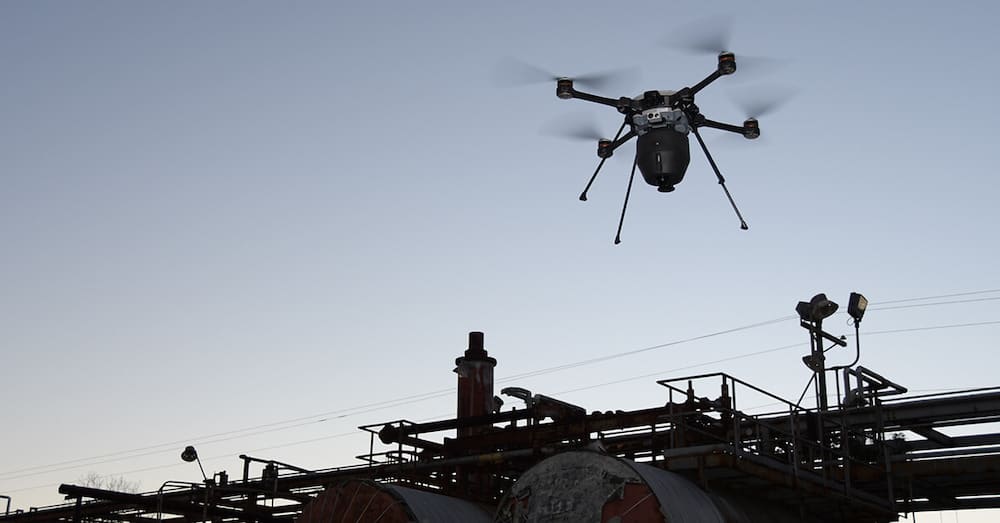



The US Department of Defense has awarded Teledyne FLIR Defense a contract to further expand the capabilities of its R80D SkyRaider UAS to autonomously perform Chemical, Biological, Radiological and Nuclear (CBRN) reconnaissance missions.
Under the $13.3 million contract, Teledyne FLIR Defense will integrate flight control software that enables the SkyRaider UAS to autonomously fly CBRN missions currently performed by soldiers hand-carrying detection sensors into hazardous areas. The company believes blending the new technology with SkyRaider’s existing capabilities will allow soldiers to complete these missions without directly controlling the drone – and without exposing themselves to toxic substances.
Teledyne FLIR will also design and build prototype chemical and radiological sensor payloads for the R80D SkyRaider, as well as integrate existing detectors in the US Army’s inventory. This effort builds on three years of investment by several joint program offices to develop new and improved UAS capabilities for CBRN missions.
Both the autonomous SkyRaider and the new sensor payloads will be designed to operate with the command and control user interface for the US Army’s Nuclear, Biological and Chemical Reconnaissance Vehicle (NBCRV) Stryker platform, for which Teledyne FLIR Defense is the prime systems integrator.
For the base contract, Teledyne FLIR will deliver four SkyRaiders and six of each sensor payload, with options to support training, documentation, plus the delivery of additional UAS and payloads.
The award was made through the Joint Program Executive Office for Chemical, Biological, Radiological, and Nuclear Defense; Joint Product Manager for Reconnaissance and Platform Integration (JPdM RPI); and the Chemical, Biological, Radiological, and Nuclear Sensor Integration on Robotics Platforms Program Office (CSIRP). Initial deliveries are scheduled for fall 2023 and the contract period of performance is 33 months, if all options are exercised.
“For many good reasons, militaries are shifting their CBRN defense strategy from manned to unmanned platforms,” said Dr. David Cullin, vice president of technology and product management at Teledyne FLIR Defense. “Employing unmanned air and ground assets to assess risks from weapons of mass destruction is an increasingly sought-after capability. We’ll continue our customers’ important work to enhance situational awareness for mounted and dismounted operations, enabling greater maneuverability on future CBRN-contested battlefields.
“This project also complements our existing portfolio of CBRN sensing drone payloads – the MUVE C360, MUVE B330, and MUVE R430 – all of which allow users to remotely detect and identify a broad spectrum of potentially lethal threats,” Cullin concluded.
Find manufacturers of software and sensors for environmental monitoring>>





Related Posts
New Drone Fires Thales Missile in Unmanned Air Combat Milestone
UAS Startup Accelerator Awards 3M in Funding
US Navy Orders Unmanned Tactical Resupply Aircraft